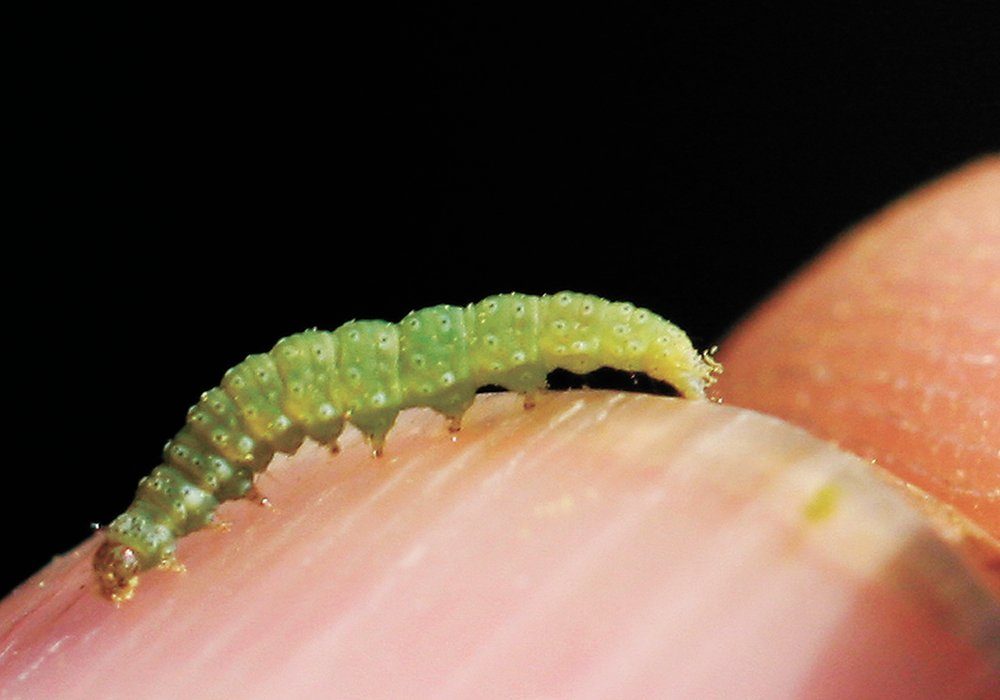Pest monitoring network helps track potential threats

Website includes risk maps and information about prevalent species, scouting procedures and economic thresholds
In today’s digital world, there are millions of internet sources offering information on just about every topic under the sun.
For prairie grain and oilseed growers, one of the most useful sources of information is the Prairie Pest Monitoring Network at www.prairiepest.ca.
Growers can visit the website and subscribe to PPMN’s weekly pest updates.
The PPMN updates include insect risk maps as well as information about prevalent insect species, populations, scouting procedures and economic thresholds.
Meghan Vankosky, co-chair of the PPMN, said growers should always be on the lookout for early-season crop pests.
Flea beetles, wireworms and cutworms can cause significant losses to agricultural crops early in the growing season, even before crops are fully established.
Work has also begun on monitoring for later-season pests including the diamondback moth.
Under the right environmental conditions, diamondback moths can reproduce prolifically, so monitoring for early-season arrivals is critical to determining the potential for crop damage later in the year.
Each year, the PPMN sends pheromone traps to provincial entomologists in Alberta, Saskatchewan and Manitoba.
From there, the traps are distributed regionally within each province to additional program collaborators.
“In a typical year, I would say we have anywhere between 150 to 200 diamondback moth traps that are reporting information across the Prairies,” said Vankosky.
Traps are set out early in the growing season and are checked regularly until late June for adult moth arrivals.
In addition to monitoring traps, PPMN collaborators, led by Agriculture Canada’s Ross Weiss, also monitor wind trajectories that are conducive to moth arrivals.
Adult moths are blown into Western Canada from the United States Pacific NorthWest, Texas, Florida and Mexico.
Favourable winds combined with the appearance of adult moths in pheromone traps provide information that is used in population projection models for different areas of Western Canada.
The different elements of the monitoring program allow PPMN to issue advisories and make scouting recommendations to growers and agronomists across Western Canada.
Vankosky said the traps and the wind trajectory monitoring program are useful as an early warning system for potential diamondback damage.
In all cases, there is no substitute for boots-on-the-ground scouting, she added.
James Tansey, provincial entomologist at Saskatchewan Agriculture, said PPMN’s monitoring program for diamondback moths is a good way to estimate potential risk.
“Traps (counts) are a pretty good indicator of arrivals and the pressure that we might be expecting regionally,” he said.
Wind trajectories favourable to the arrival of adult moths have been recorded in early May but so far, trap counts have been low.
“What we’re getting so far (in Saskatchewan) is very low counts, so negligible counts at this point, which is good news,” Tansey said.
“So nothing to worry about at this point, but that could all change in a day.”
Tansey said there are factors that suggest a potential for significant diamondback moth populations in Western Canada this summer.
In addition to favourable early-season wind trajectories, diamondback moth populations in traditional source areas have been fairly high.
For example, moth numbers in Texas are unexpectedly high this year, despite low seasonal temperatures and harsh winter conditions, including widespread snowfalls.
“Texas was a bit of a surprise,” said Tansey, who has been in touch with entomologists in key American states.
“The hard winter weather that they had did a lot of damage to their vegetable crops but it seems like the diamondback moth has come roaring back there, so populations are quite high,” he said.
“Florida populations are also quite high — two to three times normal populations compared to previous years.”
The arrival of diamondback adults in Western Canada typically coincides with the harvest of winter crops in the southern United States and Mexico.
“When those (winter) crops are harvested or when harvest quality decreases, that encourages the diamondback moth to take flight, and when they do take flight, they can reach really high altitudes — sometimes as high as two kilometres,” Tansey explained.
From there, the adults are dispersed over a large area of North America by high-altitude winds.
“They can cover huge distances, sometimes as much as 1,000 kilometres in one day…,” Tansey said.
“It’s not really well understood what encourages them to drop out of the airflow … but when they do, they can basically start raining down on our part of the world.”
Early season arrivals in sufficient numbers can be a harbinger of trouble ahead for western Canadian canola producers.
A single female moth can lay as many as 160 eggs. Within one month, those eggs have hatched and a new generation of adults is ready to reproduce.
Under the right conditions, “you can get four to five cycles per year, so the possibility of a big population increase is there.”
Source: www.producer.com

